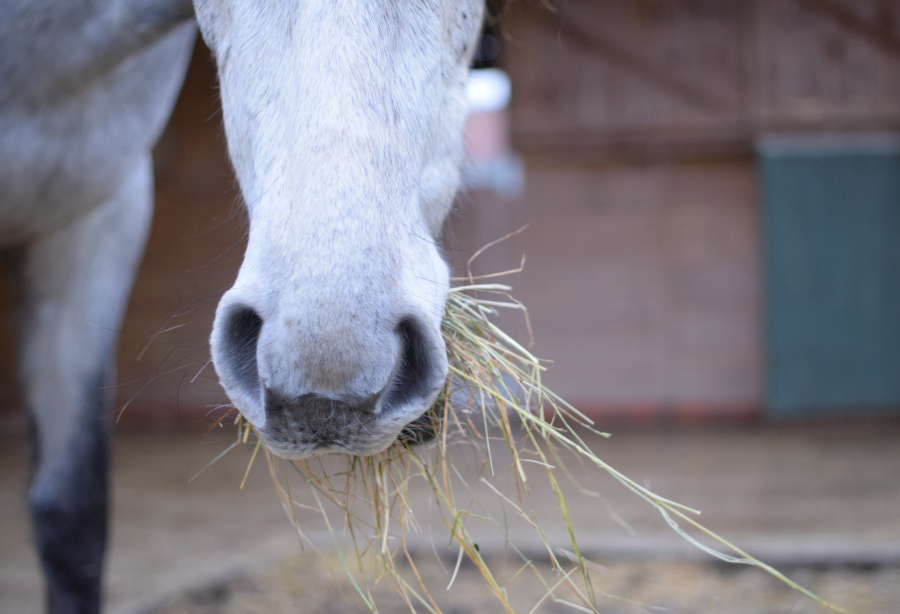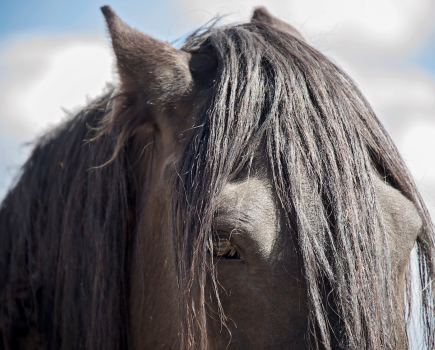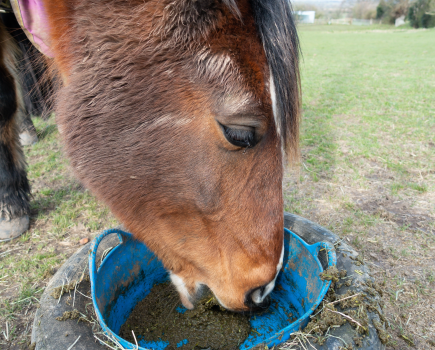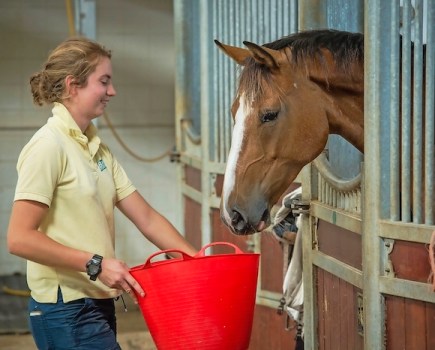In partnership with SPILLERS™
Forage in the form of hay or haylage is a staple part of a horse’s diet, including for those who are good doers and are prone to gaining weight. For generations, farmers have made hay and haylage as a way of conserving fresh grass for when grazing is in short supply.
Making hay relies on the removal of water, whereas making haylage requires the exclusion of oxygen. Hay is left to dry until it contains only 10-15% water, while haylage is left to wilt for a few days and then wrapped in plastic, resulting in a water content of 20-50%.
The portion excluding the water (fibre, protein, sugar, starch, oil, vitamins and minerals) is described as ‘dry matter’.
Forage feeding rates
Forage for overweight horses should be fed according to current bodyweight, not ideal bodyweight.
Regardless of whether you feed hay or haylage, the water content doesn’t count towards your horse’s forage intake.
This is why you need to feed more haylage than hay on an ‘as fed’ basis (that is, the amount of forage you weigh out).
Think of it a little like coffee – an espresso and a latte contain the same amount of coffee, but you need to drink a lot more liquid to get the same caffeine hit from a latte.
Best forage for weight loss
Although there are several practical reasons why hay may be a more suitable forage choice for good doers (including the fact it can be soaked to help reduce the ‘sugar’ content), haylage is not automatically higher in calories, sugar or any other nutrient than hay.
Many factors affect the nutrient content, including grass species, management of the grass and environmental conditions during the growing season, as well as harvest conditions and the maturity of the grass at the time of harvest.
These factors, particularly maturity of the grass at harvest, have a greater effect on the nutrient content than whether it is hay or haylage.
In fact, make hay and haylage from the same field at the same time and you may see very little difference in the nutrient content.
Choosing hay
- Hay should be sweet smelling and may vary in colour from a pale yellowy-green through to bright green.
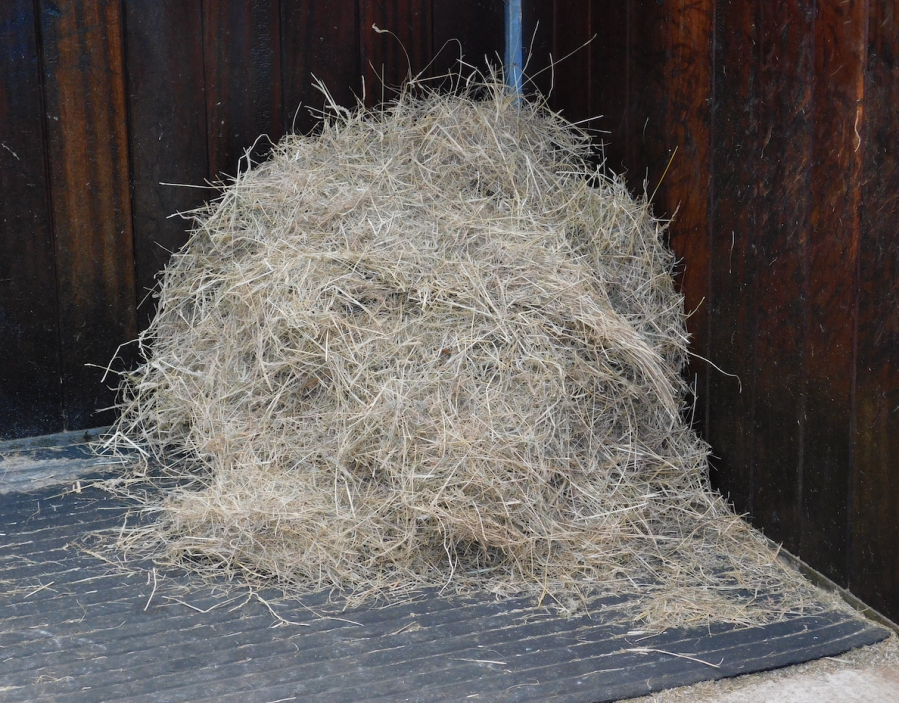
Choosing haylage
- Haylage should smell sweet. Although it’s normal for haylage to smell slightly fermented, it shouldn’t smell too acidic, like silage or ‘off’/rancid.
- Make sure it’s well wrapped in at least six layers of plastic for farmer-grown haylage. You should need a knife to open it!
- Return or dispose of any bales with holes in the plastic. Holes allow air to enter the bale and start the growth of moulds and yeasts.
- Consider how much you will feed when choosing what size bales to buy. Once opened, haylage should be used in 3-5 days.
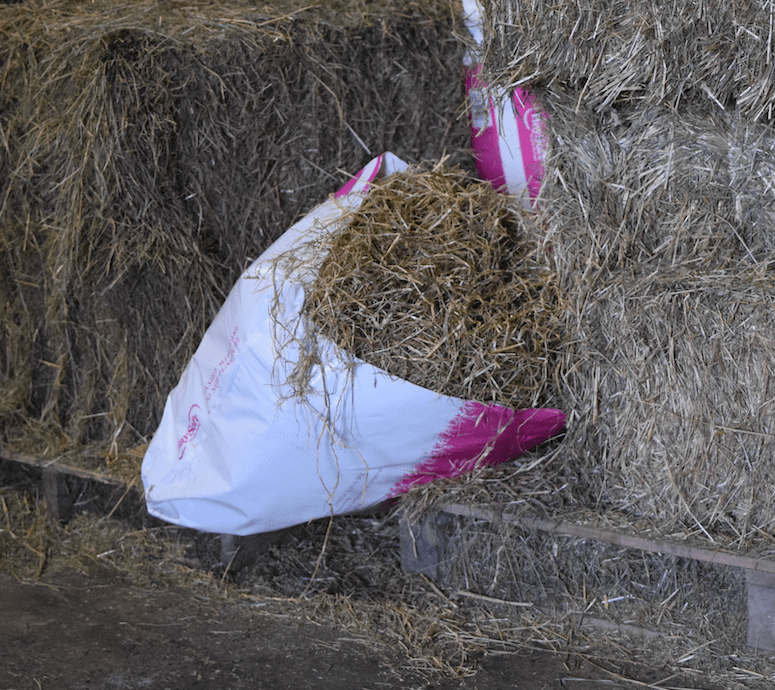
When is newly cut forage safe to feed to horses?
Hay
In theory, well-made hay should be safe to feed immediately after baling because it will have a dry matter content of at least 85% (and in turn a maximum water content of 15%).
If you’re concerned about adverse weather conditions or want to err on the side of caution, wait six weeks.
Haylage
Haylage undergoes a small amount of fermentation after baling. Once the fermentation process has finished, the haylage is safe to feed.
Wait at least six weeks before feeding haylage, or for added caution, up to 12 weeks.
All image © Spillers
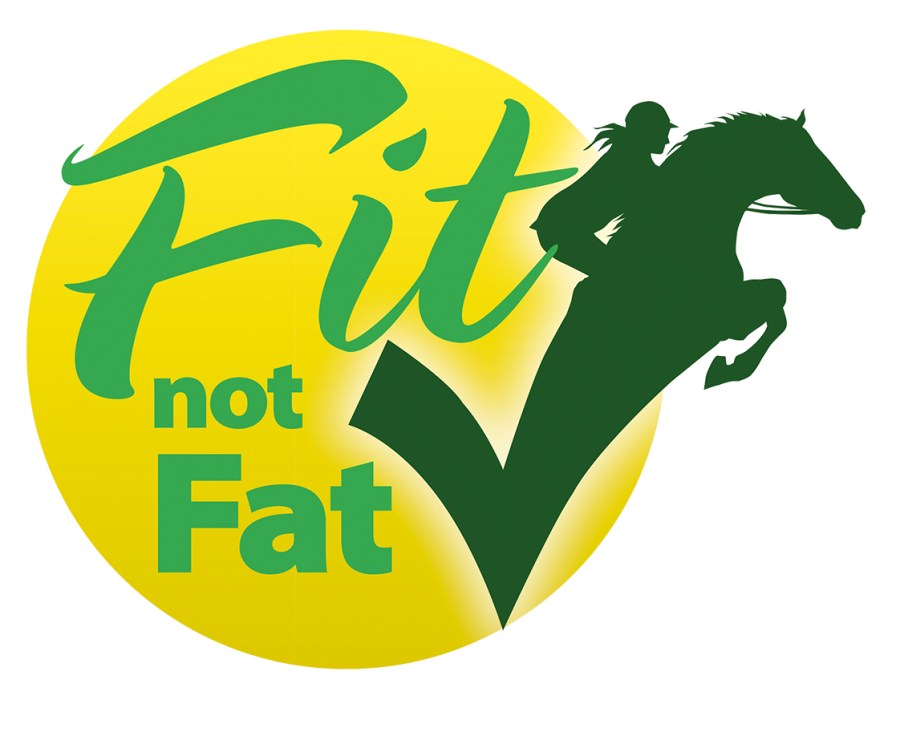
Have you heard about Your Horse’s #FitNotFat campaign? Equine obesity is an enormous welfare problem and we’re on a mission to provide owners and riders with the knowledge, skills and information you need to keep your horse in tip-top health. It could be life saving! Find out more
For more information, call the SPILLERS Care-Line on 01908 226626.

